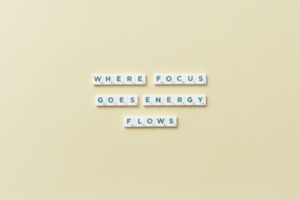Mastering the Art of Overcoming Objections in Sales
Overcoming objections in sales is a skill that separates top-performing professionals from the rest. Whether you’re a seasoned salesperson, entrepreneur, or business owner, knowing how to handle objections effectively is essential to build trust and close deals confidently.
Objections are the ultimate gatekeepers in sales. Whether you’re an experienced sales professional, an entrepreneur, or a business owner, you’ve likely faced pushback in some form during the sales process. Handling objections skillfully is critical—not only to close deals but also to build trust and long-term relationships with your clients.
Jeb Blount’s The Ultimate Guide to Mastering Objections is a definitive playbook that equips you to tackle resistance head-on. Below, we’ll break down key insights from his book to help you handle objections like a pro.
The Psychology Behind Objections
Before addressing objections, it’s essential to understand why they exist. Objections aren’t always outright rejections. Often, they stem from basic psychological barriers rooted in fear, doubt, or even simple habits. Potential buyers are wired to resist decisions that involve risk or change, and as a sales professional, it’s your job to empathize with their concerns.
Key Point: Recognize that objections are natural and expected. Instead of fearing them, view them as opportunities to learn more about your prospect’s thoughts and needs.
Mindset Matters
Jeb Blount emphasizes the importance of maintaining the right mindset when facing objections. You must approach them with confidence and optimism rather than defensiveness or frustration. Your tone and attitude can either disarm objections or intensify them.
Takeaway: Stay calm and collected. Salespeople who can handle objections without taking them personally are far more likely to win over their prospects.
EQ over IQ
One of Blount’s standout principles is the significance of emotional intelligence (EQ) in overcoming objections. While product knowledge and preparation are essential, EQ is what enables successful sales professionals to build rapport, read emotional cues, and respond empathetically to objections.
Why EQ Wins:
- Helps you read between the lines to uncover deeper concerns.
- Allows you to adapt your communication style to the prospect’s emotional state.
- Builds trust, turning skeptics into loyal customers.
The Science of Objection Handling
Blount outlines a structured framework for objection handling, making this potentially stressful task much easier to manage. Below are the steps to guide a productive and respectful objection-handling conversation.
1. Acknowledge the Objection
Acknowledging an objection validates the prospect’s feelings and demonstrates that you’re listening. Ignoring or dismissing the objection can make a potential client defensive.
For example, if a prospect says, “The price seems too high,” resist the urge to counter immediately. Instead, respond with something like, “I understand why you’d feel that way. Many of our clients initially felt the same.”
2. Isolate the Objection
Often, what may seem like a major objection is just a surface issue masking a deeper concern. Asking follow-up questions helps you pinpoint the real obstacle. Blount refers to this step as “peeling back the onion.”
Try asking, “Is price the only thing holding you back, or are there other factors to consider?” This allows the customer to clarify their hesitation.
3. Validate the Concern
Empathy is a powerful tool in objection handling. Repeat the objection in your own words to show that you understand and care. This not only builds trust but also ensures that you both are on the same page.
Example validation response when faced with a time objection: “I can see how a busy schedule might make this decision feel a bit overwhelming. I completely understand.”
4. Reframe the Objection
This is where you shift the focus from the objection to highlighting the value of your offering. Reframing doesn’t mean ignoring objections. Instead, it means tactfully steering the conversation toward solutions.
For instance, if the objection is about price, you can reframe by emphasizing ROI. “I understand the price feels significant up front, but most of our clients find that the value they gain far outweighs the cost within the first three months.”
5. Resolve and Close with Confidence
Once the prospect feels heard and you’ve provided reassurance or solutions, confidently guide them toward moving forward. Closing the objection is all about timing; push too soon, and you risk losing the sale. Be patient but prepared to secure their commitment when the time is right.
Common Objection Types and How to Handle Them
Blount categorizes objections into specific types that sales professionals frequently encounter. Here’s a quick overview of common objections and suggested ways to address them.
1. “It’s too expensive.”
- Highlight the long-term benefits and ROI.
- Share testimonials or case studies showing value delivered to other clients.
2. “I don’t have time right now.”
- Offer flexible options for follow-ups or trials.
- Remind the client how your solution can save them time in the long run.
3. “I need to think about it.”
- Probe gently to understand what’s causing hesitation.
- Offer to revisit the conversation after they’ve had time to reflect.
4. “I’m happy with my current provider.”
- Focus on differentiating your product or service.
- Ask about current pain points or inefficiencies their provider isn’t addressing.
The Importance of Follow-Up

Jeb Blount stresses the art of strategic follow-up in converting objections into opportunities. Often, objections left unresolved simply need some time and gentle nudging. Staying top-of-mind with consistent, empathetic follow-ups allows you to turn “maybe” into “yes.”
Pro Tip: Use personalized communication for follow-ups. Reference specific points from your prior conversations to show that you’re invested in their concerns and goals.
Final Thought
Mastering objections is one of the most valuable skills in sales. It transforms barriers into bridges, doubt into trust, and prospects into satisfied customers. Jeb Blount’s Ultimate Guide provides practical tools and frameworks that every sales professional, entrepreneur, and business owner should take to heart.
At the end of the day, handling objections is more than just closing deals. It’s about building meaningful relationships, solving problems, and delivering value.
Are you ready to put these strategies into action? Start by practicing active listening, building your emotional intelligence, and refining your objection-handling framework. The results might surprise you.


